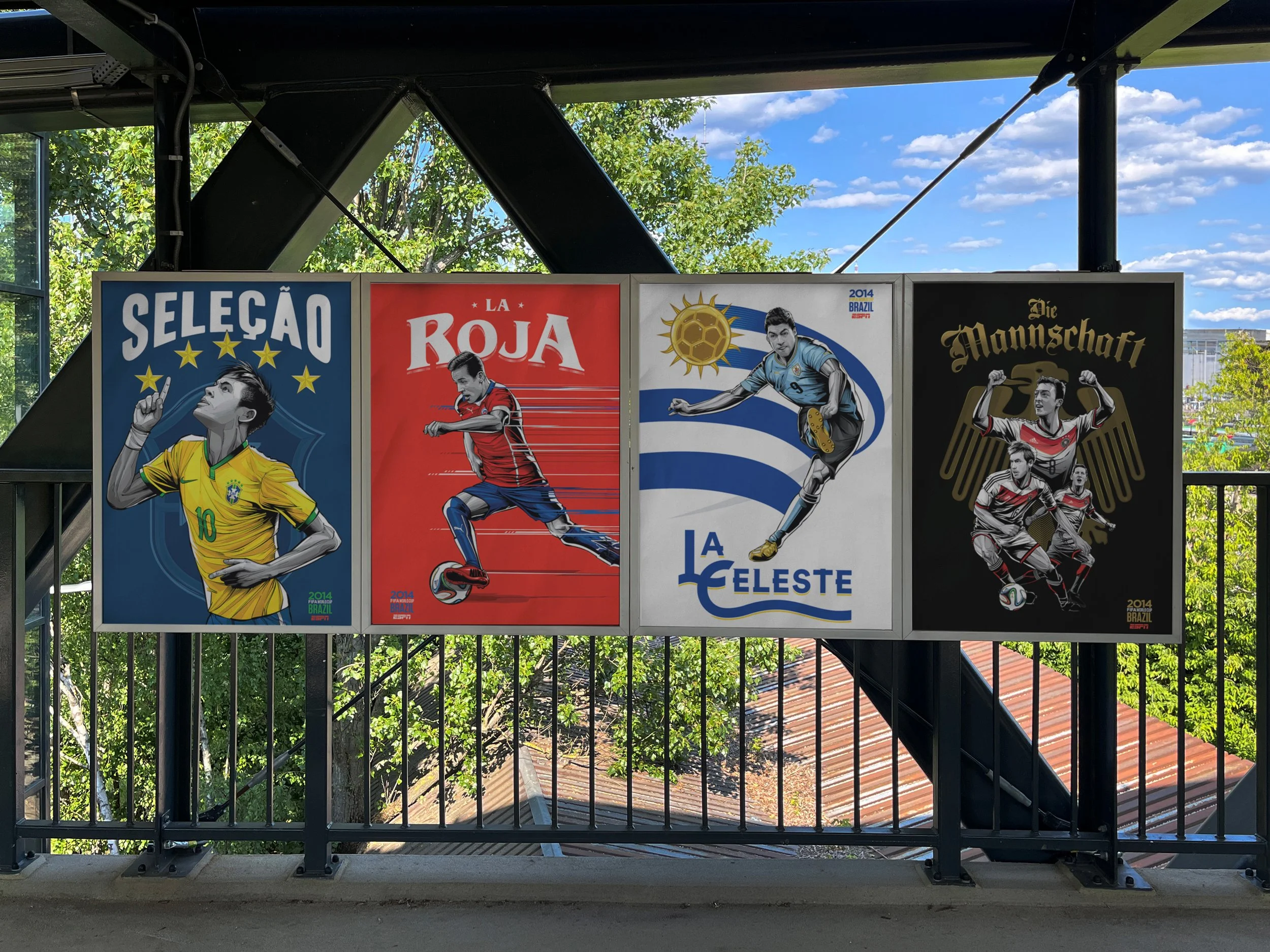Why Do We Still Turn to Drawing?
From cave paintings to brand campaigns, drawing has always been part of how humans make sense of the world. Yet in our era of hyper-polished photography and endless stock images, one might wonder: why do we still return to illustration? The answer lies not in novelty but in emotion, memory, and meaning. Illustration cuts through the noise, gives shape to feeling, and becomes something people carry with them long after a campaign ends.
A photograph captures a moment. An illustration interprets it. That interpretation is what makes it resonate. Drawings distill identity, mood, and narrative into a single frame. They invite us to slow down, to notice the choices of line and color, and to see not just what something looks like but what it feels like. When done with care, an illustration doesn’t just show, it stays with us.
Fifa 2014 posters - ESPN
Why Some Brands Still Hesitate
It’s true that many brands hesitate before choosing illustration. They worry it may feel riskier than photography: less literal, harder to brief, sometimes slower to produce. Questions naturally arise: will audiences understand it? Could the style feel too niche? These are valid concerns.
But increasingly, the very things that once felt like risks are becoming the reasons brands embrace drawing. In a world where visuals can look predictable and repetitive, illustration offers individuality, emotion, and surprise. Choosing it signals confidence. It says, we believe in our story enough to illustrate it.
A powerful example of illustration’s longevity comes from the 2014 World Cup. That year, illustrator Cristiano Siqueira created a series of posters for ESPN that portrayed each participating nation in bold, expressive designs. More than a decade later, those images remain alive in the minds of fans.
People still write to us about those posters, saying how deeply they are connected to them. Every time they see the work, they relive the emotions of that summer, the anticipation, the pride, the heartbreak. The project has long outlived the tournament, becoming part of cultural memory. That is what illustration can do: carry emotion across time.
Illustration is not a nostalgic choice or a decorative flourish. It is a strategic tool. It creates cultural artifacts, not just campaigns. It turns marketing into something that lingers, something that becomes part of people’s stories.
As Milton Glaser once said, “There are three responses to a piece of design — yes, no, and wow. Wow is the one to aim for.” Illustration delivers that wow by connecting on an emotional level, not just a visual one. It offers distinctiveness when audiences stop noticing the predictable. It creates work that people want to keep, remember, and share.
Looking Ahead
From where I stand, I see a shift in how brands are approaching illustration. They are leaning more into personality and emotion, aware that audiences crave authenticity over perfection. They are discovering that drawing is not a niche indulgence but a differentiator in a crowded visual market.
Illustration isn’t just surviving, it’s expanding where and how it’s used. From murals to digital campaigns, brands are rediscovering that drawing brings something no other medium can: surprise, distinction, and emotional weight. Yes, it can feel less predictable than photography, but that is its strength. Illustration signals confidence. It tells audiences that a brand is willing to take the time, the care, and the craft to say something in a more personal way.
And when it works, the effect lasts. A poster becomes a keepsake. A campaign becomes a cultural touchstone. A single line, drawn with intention, can turn into a story people return to again and again.
So why do we still turn to drawing? Because it doesn’t just show us what happened, it shapes how we remember it. And in a world of fleeting visuals, that is the kind of connection every brand should be striving for.


